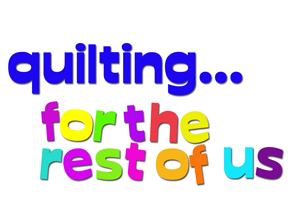Today is my first day of my “staycation”—today, tomorrow, and all next week. I did have to put in a couple of hours work today and I’ll likely have to put in maybe an hour tomorrow with things I just couldn’t get finished up and am waiting on other people in order to get them squared away, but it is what it is.
I way overslept this morning as I had a slew of Zoom calls yesterday and a webinar in the evening, and was just fried. It’s okay to sleep in on a vacation day but I felt like I lost the whole morning as it took me awhile to get myself actually feeling awake. So the morning was mostly reading blogs, news, social media, and such.
By the way, Have you heard of the app Serial Reader? You choose the book you want to read and it gives it to you in daily 15-minute-reading increments. It’s got a bunch of the classics. I’m reading The Narrative of Sojourner Truth. I really like doing it in these short snippets because her writing style is, obviously, an older one and not always easy to get through. I think if I sat down and started it as a book, I’d get partway through and feel overwhelmed. But knowing I just have a few pages to get through makes it easy. It’s a really good book!
Getting ready for class
The main focus of my first day of vacation, however, was my first class of the Online Quilt Festival. I took “Not So Boring Stippling” with Julia Quiltoff, a three-hour class to help inspire us with all sorts of ways to do more interesting stippling designs.
The instructions were to log in at 11:30a (the class started at noon) so that she could check to make sure everyone’s audio and video were working. Since I’m a Zoom Maven, I was able to just say “yep” and “yep” and then I turned my video and audio off and proceeded to straighten up my sewing area while other folks were doing the usual, “Can you hear me? Can you hear me? What mute button?” or being really chatty (which I still wasn’t feeling awake enough to do).
Here’s a quibble for me, though: The teacher never took the time to walk people through the basics of using Zoom—mute yourself, use the chat room, pin the video. Turns out, partway through the class, the third time she froze and had to log out and back in again, this was the first time she’d used Zoom herself. She had used other platforms so clearly assumed it would be close enough. I wish she’d taken a little time to familiarize herself a bit more. I ended up being the Zoom Tipmaster for the class in the chat box. Don’t get me wrong—I certainly understand participants who may not have been comfortable with it (although please, people, look it up before you try to log in for the first time!). But for the teacher to not take the time to walk people through the basics? It just wasted a lot of time later in the class. And it felt WAY too much like a regular work day for me again rather than a fun vacation-day-quilt-class. But I got over myself.
(Really fun side note: Guess who was another student? Pokey Bolton! I private messaged her that I had her books and was happy she was in the class, which she appreciated. Julia Quiltoff clearly had no clue who she was so I wanted to let Pokey know that she was recognized!)
Julia demonstrating tips for better pearls
Julia started out by saying she was cramming a 10-hour class into our 3 hours so we should get ready for an intense class. It actually wasn’t that bad, although by Hour 2 I was having problems staying engaged. She went through five “tricks” for creating more complex designs at top speed, drawing everything out in a notebook. I was also drawing things out in my sketchpad along with her, but by Trick 4 it was pretty easy to figure out what the variation would be. I’m guessing in her 10-hour version, you do a lot of actual machine practice with each section so it breaks it up more.
Somewhere in Hour 2 she asked one of the participants to demonstrate a problem the participant had asked about. Said participant then took a good 5 minutes to get herself set up with her phone camera aimed at her sewing machine needle (including having to call someone in from another room to hold the phone), then sewed for a few minutes, and then the two of them talked it through. That’s exactly what classes are for, of course, but in a normal class, she’d have been standing with that student at a sewing machine while the rest of us were working away on whatever we were working away on. It was just really annoying to have to sit there and wait while everything got set up and such. I know. I sound like a crankbucket. I just spend WAY WAY WAY too much time on Zoom to have patience anymore.
So I turned on my sewing machine, grabbed some quilt sandwiches I made several years ago for practice (and then quickly stopped quilting at all, so I’ve still got quite a stash!), and with my video and audio still muted, just took the next half hour or so to practice myself.
Yikes.
It’s really not just like riding a bike. I was never a fantastic FMQer but I’d at least reached “Confident Beginner” stage, if not dabbling my toes into intermediate. I actually had gotten some decent feathers going on occasion. Today? Not so much.
One thing I did remind myself of, though. I had learned, back when I was doing this FMQ thing more regularly, that my drawing skills had nothing to do with my FMQ skills. I can’t draw worth a lick. But when I take a hen-scratch design from my sketchbook and did it as FMQ, I often had far better results.
Not today, of course. But there’s still a whole lotta rust on this girl from lack of use. I’ll get there again.
So, I think I’d give the class—in this online format—an overall grade of a B-. I got good ideas, but I could’ve gotten them in a shorter amount of time with a book and without the frustration of technological issues. That being said, I did like Julia Quiltoff quite a bit—she’s got great personality and clearly knows her stuff. I’d take an in-person class with her anytime. Some classes just translate better to an online format than others. She is sending us memory sticks with her full 10 hour class on them so that will help me feel like I got my money’s worth.
Now it’s time to do as much cutting as I can get done for tomorrow’s class on the curved log cabin. I’m really looking forward to that one—it’ll be good to have a project with progress to measure during the class!




















